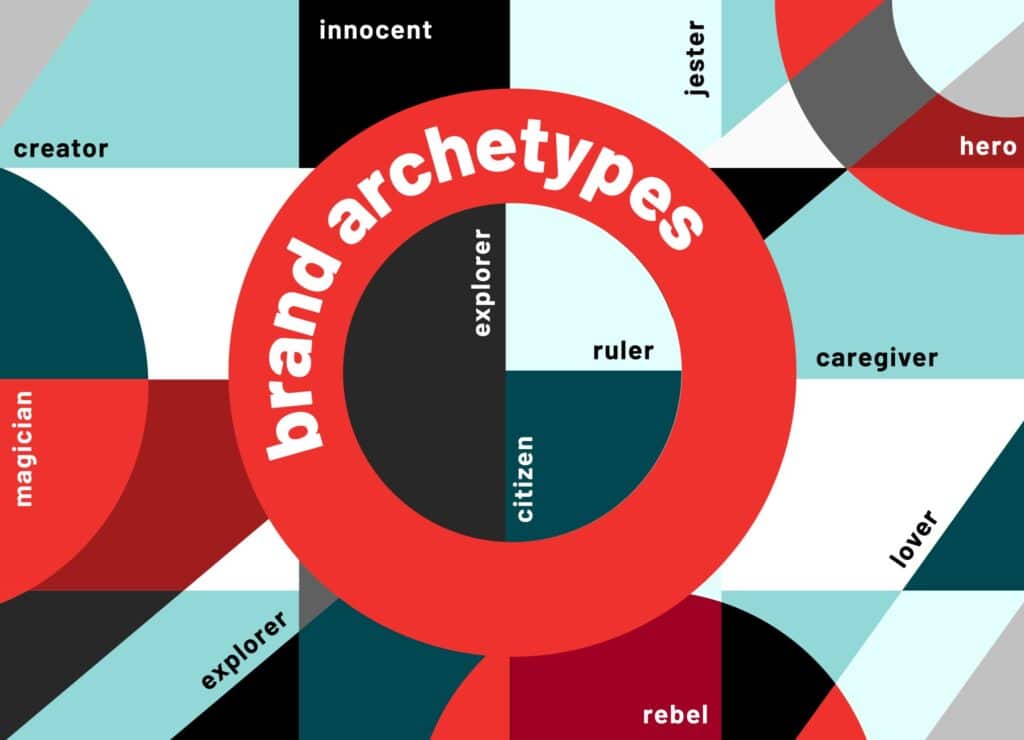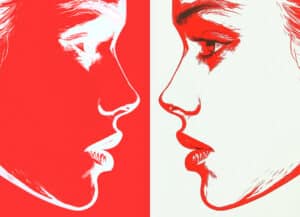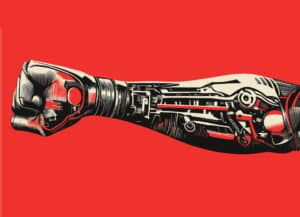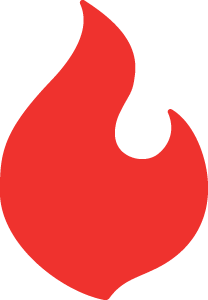A new brand launch or brand refresh is so exciting at first! How many of you have devoted an entire day to a Brand Discovery or Charrette, laughed your way through a Nine-Grid exercise, decided what kind of dog best represents your brand, or pondered “what kind of beverage or car or texture are we and why?” Only to spend the afternoon agonizing over the adjectives used in a Maslovean brand pyramid? Then right about the time everyone is ready for happy hour to celebrate your revelations, the brand strategists ask everyone to dig deep for one last exercise: The Statement of Relevant Differentiation. The energy level drops like a stone. (My apologies to all the clients I have tortured with that archaic approach to brand strategy and identity.) The good news is FUEL has a better, faster, more meaningful path to identify a brand’s essence. Welcome to brand archetypes.
What is a brand archetype?
Using archetypes for brand identity and strategy became a liberating approach in 2001 with the book, The Hero and the Outlaw, by Margaret Mark and Carol S. Pearson. The authors declare a revolution on the practice of creating brand pyramids and brand wheels that try to express brand meaning only to end up with “adjective soup.” And even worse, adjectives that were probably distilled down to whatever the group, as a whole, could agree on. Bleh. If you have not read our very own Brittany Sinde’s rousing book review, you can check it out here.
Historically, archetypes fulfill a spectrum of human needs for meaning and purpose, deeper connection, and belonging. Using archetypes in branding liberates brands (and stakeholders) by allowing them to identify and align themselves behind a framework versus creating their brand identity from scratch.The authors write, “This alternative navigational system makes it possible to find the meaning that is right for your brand and to preserve, nurture, and enrich that meaning over time… They force you to make a choice, embrace an idea, and immerse yourself in the depth and breadth of that concept as opposed to being caught up in an endless and often meaningless debate about a list of attributes.” Rather than ask the question, “What is the tone and voice of our brand?” we now can state, “As a Rebel archetype, your brand would sound like this…” Or “If you were an Explorer, your brand would show up looking like this…”

The Brand Archetype Wheel
How do you find your brand archetype?
First, find a good, objective, experienced branding partner (like FUEL) who can guide you. I know that sounds self-serving, but having an external perspective is invaluable. When Mark and Pearson wrote their book in 2001, there were 12 main archetypes. Over the course of ten years of using the archetype approach, another group of smart marketers and strategists decided to expand the number of archetypes to 60 (12 primary archetypes plus the four sub-archetypes of each). In 2012, the toolkit Archetypes in Branding was written by Margaret Pott Hartwell and Joshua C. Chen. They realized that while 12 was great, archetypes were more nuanced. If the Hero archetype could be further divided into Athlete, Liberator, Rescuer, or Warrior, how much richer of an opportunity for brands to find their true core and, most importantly, their ultimate purpose and role within the world? The decision for clients then becomes determining which is a better, truer fit. This option versus that option. What are our proof points and evidence to support this choice? It’s like trying on a brand coat. Which is infinitely easier than ten people sewing the coat from scratch, at the same time, with different visions.
At FUEL, we work with our clients on a series of workshops focused on studying potential archetype options, identifying the right direction, and collaboratively working to write or rewrite their brand’s purpose, vision, and mission statements, while also articulating the brand DNA and brand principles. These elements greatly inform the brand’s positioning, narrative, and visual identity.
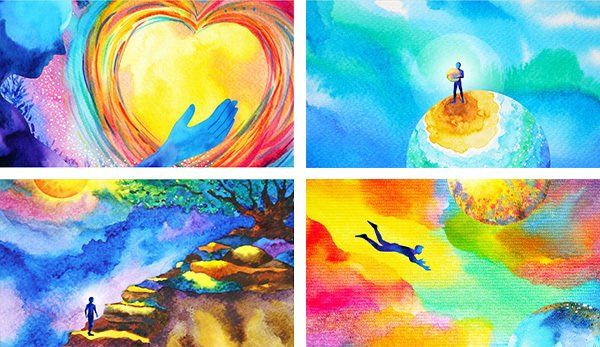
Archetypes visualized: The Healer, The Idealist, The Entrepreneur, The Pioneer
How does my target audience fit in?
A key component in aligning on an archetype is also understanding your customers and their needs or desires. We analyze why your customers’ motivations could compel them to seek you out in the first place, not just from a product perspective but from an ethos perspective. Embracing your archetype might change your company’s approach to business or change what products or services you provide to your customer. For example, in 2004 the Dove brand identified that most women don’t think of themselves as beautiful or attractive. Their brand archetype, The Innocent, is driven to create safe spaces of parity, acceptance, and innocence. And the brand story they created was that all women are accepted and loved here, no matter their skin color, body shape, age, or ethnicity. They didn’t use Photoshopped, pencil-thin models in their ads but rather real women talking about how it felt to use Dove Body Wash. And their audience responded. The Dove Campaign, “Real Beauty,” is still going and it will likely never get old because each story it tells is about a real relationship between Dove’s brand archetype and its target audience. The company leaned in even further when they created the Self Esteem Project, helping parents and teachers teach positive self-esteem to kids. Identifying the right brand archetype doesn’t just set up the perfect platform for telling your brand story, it allows us to write stories about what your brand can do for your target audience.
How do brand archetypes translate to business growth?
There are several facets we can analyze, but I love how Hartwell and Chen word it here: “Designed to help the effective integration of brand culture and communications, an archetypal approach creates a unique way to have the conversations that matter to the future success and sustainability of your brand and your business. Today’s brands are increasingly defined by their interactions and relationships. Customers are demanding greater accountability and integrity from businesses. Workers are craving a deeper sense of meaning from their careers. And companies are continually seeking ways to achieve more powerful and resonant brand engagements. Applying the phenomena of archetypal wisdom facilitates a more authentic, holistic, and human way of being in business.”
So how exactly does the archetype approach drive growth? When used to its fullest potential, your archetype should inform not only your marketing materials but also your company’s values and growth agenda. Because in some sense, when you define your values, you uncover your archetype; they’re inextricable. And when your archetype and your stated values inform your company’s behavior, you have reached what the authors refer to as “organizational congruence” and what analytical psychology – the basis of archetypal psychology – defines as “authenticity.”
Take employees for example. They want to work for a company that stands for something and/or whose values align with their values. This enables your company to attract top talent, people who are not simply there to collect a paycheck but rather to help your company fulfill its mission and vision due to an aligned purpose. Glassdoor’s Mission & Culture Survey 2019 found that “over 77% of adults across four countries (the United States, UK, France, Germany) would consider a company’s culture before applying for a job there, and 79% would consider a company’s mission and purpose before applying. In fact, over half of the 5000 respondents said that company culture is more important than salary when it comes to job satisfaction.”
Virgin Group Case Study
Archetypes can also help create a roadmap for revenue growth. They can (and should) inform new products, services, and brand extensions. A great example of this is Richard Branson’s Virgin Group. Virgin is a classic Rebel archetype, starting with the belief that they could do a better job at producing and selling records in 1972. And for the next 50 years, that Rebel reinvented the Virgin brand in the hospitality, communications, and financial industries. They even had the audacity to believe that they could do a better job of making commercial space travel accessible through Virgin Galactic. Talk about letting your archetype guide your business!
Virgin says it best: “For over 50 years, the Virgin brand has been renowned for providing unique and exceptional customer experiences. Each Virgin branded company brings a fresh, innovative, and distinctive consumer proposition, shaking up the status quo to create businesses that lift experiences out of the ordinary. This clear focus on the consumer has given the brand the ability to expand into new sectors and new geographies. From Virgin Money’s unique customer store concepts to Virgin Red’s fresh perspective on rewards and how Virgin Voyages is set to re-invent the cruising experience – each Investee Business and Licensee strives to put the customer experience at its heart. Virgin’s brand purpose is Changing Business For Good.”
When applied to business, archetypes offer what matters most to brands and companies: differentiation, loyalty, and bottom-line sustainability.
FUEL specializes in brand archetypes and strategy. We’d love to talk to you about where your brand is and how archetypes can support even greater future growth. Contact us to start the conversation.
